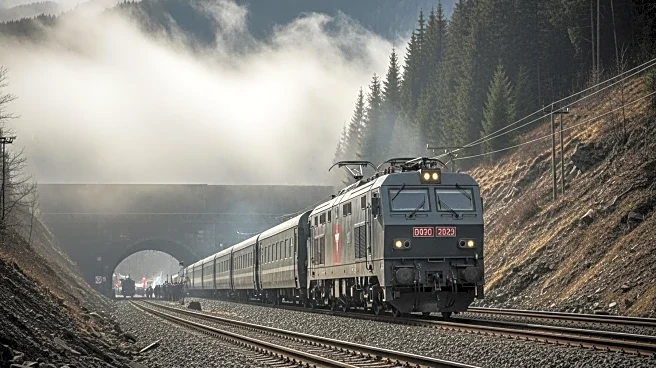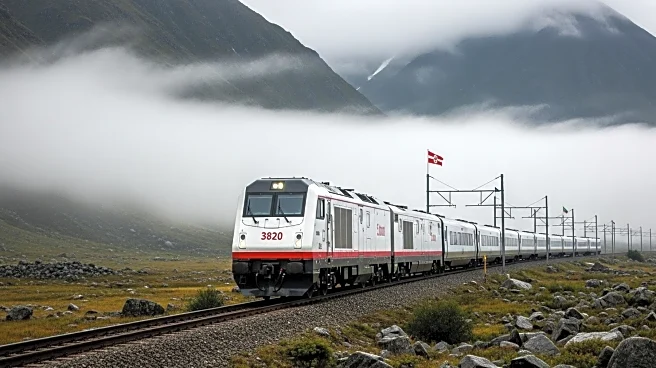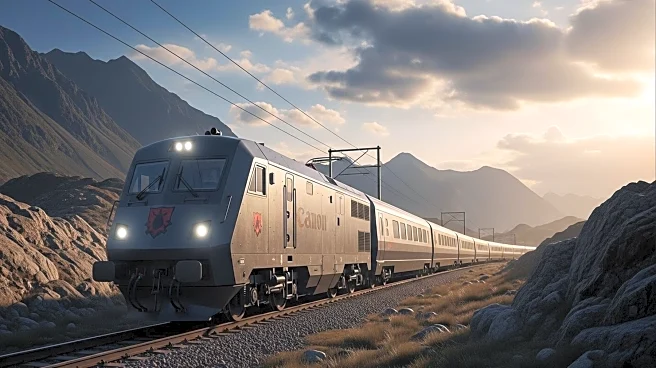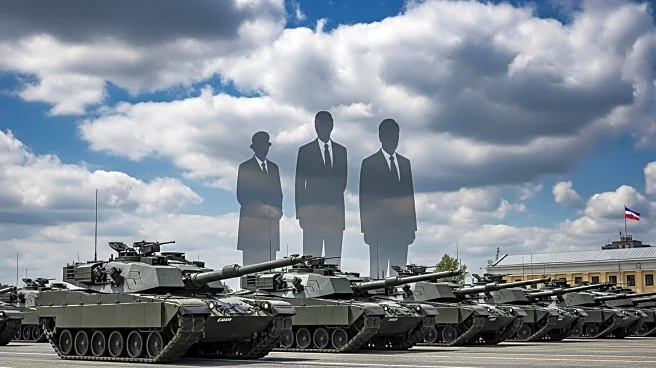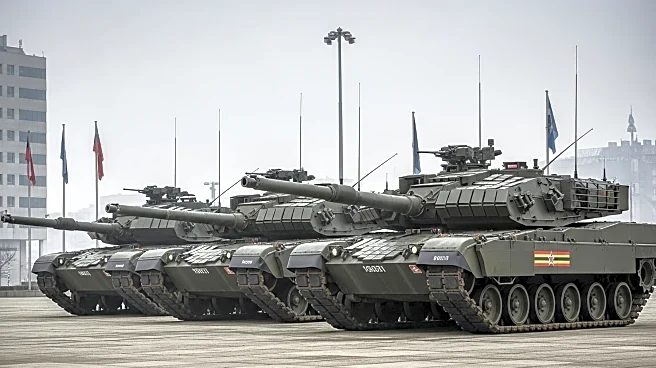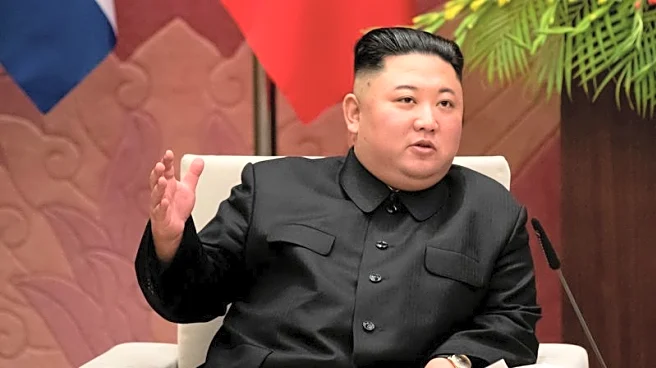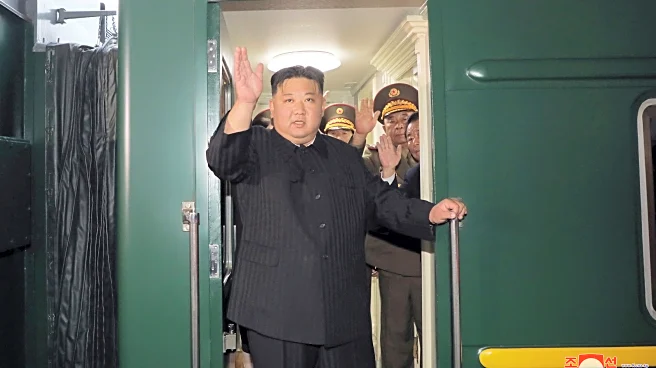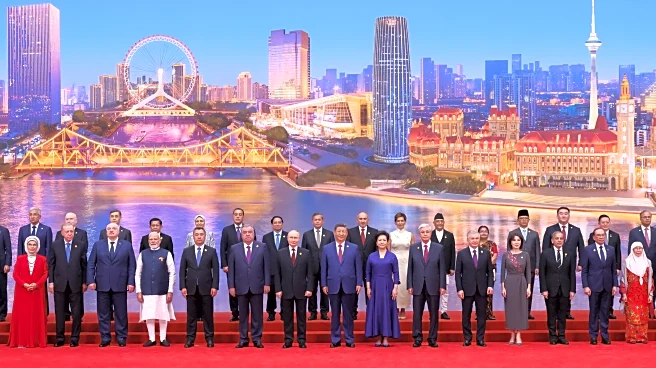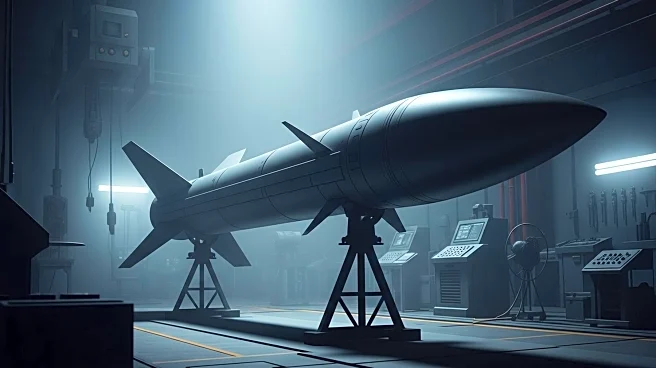What's Happening?
North Korean leader Kim Jong Un is traveling to Beijing for a military parade, using his signature armored green train. This train, a symbol of the Kim dynasty, has been used by generations of North Korean leaders for international trips. North Korean state media confirmed that Kim's train crossed into China, accompanied by senior officials including Foreign Minister Choe Son Hui. The train, known for its slow speed and heavy armor, features conference rooms, bedrooms, and satellite phone connections. Kim Jong Un has previously used this train for international visits, including a trip to Russia in 2023 to meet President Vladimir Putin.
Why It's Important?
Kim Jong Un's travel to Beijing in his armored train underscores the continued use of traditional methods by North Korean leaders, reflecting the country's isolation and security concerns. The visit highlights North Korea's diplomatic engagements with China and Russia, potentially impacting regional dynamics. The train's symbolism and the leader's presence at the military parade may influence perceptions of North Korea's military posture and its relationship with major powers. This event could affect U.S. foreign policy and strategic interests in the region, as North Korea's actions often have implications for international security and diplomatic relations.
What's Next?
Kim Jong Un's participation in the Beijing military parade may lead to further diplomatic discussions between North Korea, China, and Russia. The event could prompt reactions from other countries, including the United States, regarding North Korea's military capabilities and alliances. Future engagements between these nations might focus on security, economic cooperation, and regional stability. Observers will likely monitor any agreements or statements resulting from Kim's visit, assessing their impact on geopolitical tensions and international diplomacy.
Beyond the Headlines
The use of the armored train by Kim Jong Un highlights the cultural and historical significance of this mode of transport within North Korea. It reflects the country's emphasis on tradition and security, while also serving as a tool for state propaganda. The train's luxurious features contrast with reports of impoverishment within North Korea, raising ethical questions about resource allocation and leadership priorities. This event may also influence perceptions of North Korea's leadership style and its approach to international relations.
